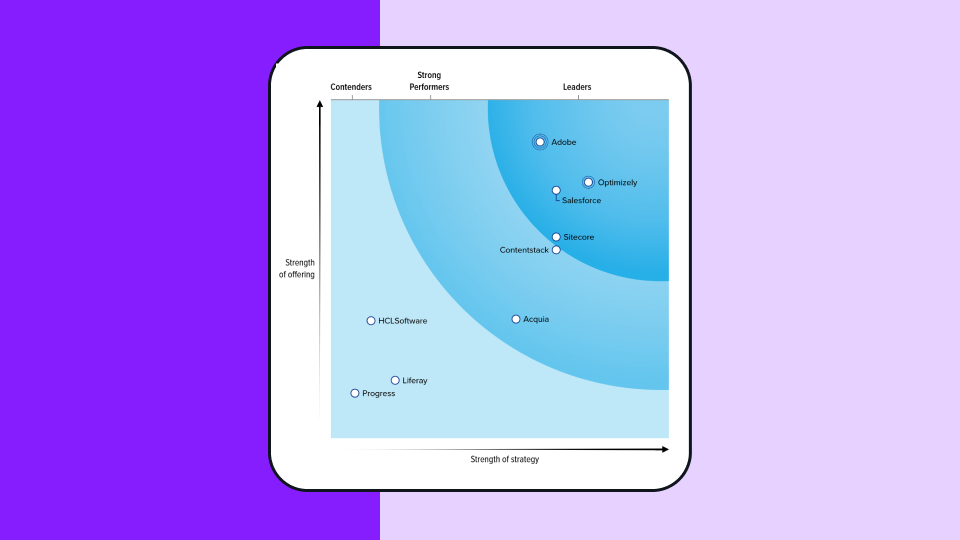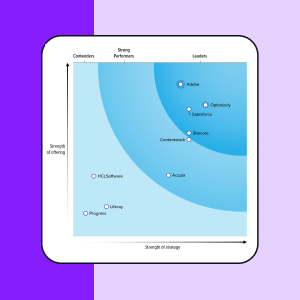Strategic data management
Strategic data management is the process and resource that a business puts in place to collect, analyze, store and use data to achieve business goals.
There are four types of data that businesses typically collect:
- Descriptive data is qualitative. It identifies what or who. Some examples of descriptive data in business include buyer personas, target audiences, historical records, keyword reports or process maps. Descriptive data can also include descriptive statistics. These include things like medians, averages or other features of existing data.
- Diagnostic data explains why something happened. It's typically what you turn to when troubleshooting or trying to understand a phenomenon, as it can highlight correlations, patterns and relationships. Diagnostic data is usually collected via data drilling and data discovery, taking the form of metrics or KPIs. It's often quantitative data, but not always.
- Predictive data helps businesses anticipate the future. It doesn't predict the future, but if you're looking at forecasts or probabilities, then you're looking at predictive data. In business, predictive data leverages machine learning to figure out what's most likely to occur given a set of known variables. Some examples may include market forecasts, consumer behavior predictions or data suggesting how well a marketing campaign might perform.
- Prescriptive data helps businesses identify what steps they need to take next. It's often what results from predictive data, but it can also arise from known truths about things like market segments or consumer psychology. Content intelligence and experience optimization are two examples of what can be done with prescriptive data. In both cases, you're anticipating what the customer needs or wants and serving it up before they ask for it.
Benefits of strategic data management
The business world is increasingly data-driven. That's because we know more than ever about things such as how people behave based on different conditions, and what market conditions can make or break a business.
However, data is only useful if we're able to use it. To keep it organized, accessible, and useful, businesses turn to data management strategies.
When they do, they enjoy many advantages. These include:
- Better insights. When data is organized and accessible, it's easier to mine for insights that can inspire smart, perceptive decisions.
- Improved data quality. A solid data management regimen within a business does more than help a business make great decisions. It also protects data integrity and the resulting accuracy of predictions or prescriptions.
- Faster decisions. Imagine responding to changes in the market or a supply chain in hours rather than days. With the right information at your fingertips, you're free to act or even take the initiative ahead of trouble.
- Greater visibility. The quality and quantity of the data you can collect directly corresponds to how much visibility you have in your system. By strategically planning your data management, you can build greater visibility into your business.
- Increased competitiveness. Many competitive advantages rely on having access to the right data and the right insights. For example, personalization -- which increases revenue by 15% and market-spend efficiency by 30% -- requires understanding your customers ahead of time to deliver the experience they're expecting.
- Eliminated data silos. A data silo occurs when data gets stored in areas that aren't easily accessible to the whole business. These often occur within departments or sometimes specific people. Since data management tools often unify data sources by standardizing collection and storage, these are eliminated. Everyone can access and benefit from all knowledge.
How to execute strategic data management
Companies that rely on data to make strategic decisions must have a data management process in place. Here's how you do it:
-
Identify your business goals and how you'll measure them
Your business generates a tremendous amount of data points already, but not all of them have equal value. Whether or not something matters will depend on your specific business objectives and how you'll use them in decision-making. Some common goals to include in your data strategy are:
- Increased revenue
- Expanding a product line
- Reduce overhead expenses
- Improve average order value
As you determine your metrics and KPIs, beware of vanity metrics. These are metrics that look impressive but don't actually tell you anything about how well your business is performing.
-
Develop processes to collect, analyze, store, and govern data in a data strategy
The processes that you use to collect and analyze new data will be unique to your business. Start by considering the sources (system metrics, consumer input, etc.), who owns the data and the stakeholders.
Then, identify what governance requirements you need. This may include security components, or it may include regulatory compliance requirements.
After that, determine how you'll collect, store and analyze your data in a roadmap. Identify what can or should be automated and what requires human oversight to get it right.
-
Acquire the right management solutions
Data management solutions can help you stay organized, secure and in tune with your enterprise data. They can also provide a unified data architecture that keeps everything visible in addition to automating rote tasks. We recommend that you look for a data management solution with the following features:
- Integration support for your office tools and processes
- Automation for rote tasks like categorizing, archiving and backups using artificial intelligence
- Enhanced security for enterprise data
- Multi-user support and collaboration tools
- Intuitive interfaces and easy controls
- Advanced data science tools
-
Train your staff on proper data procedures
Having great tools matters, but they are only effective if your staff knows how to use them. After deploying your chosen data management solution, make sure to train your staff. This should include:
- How to use the software or data management solution
- Reveal any data privacy laws applicable to your industry or country
- How to handle documents such as containing business data assets
-
Monitor and update your data strategy
Strategic data management isn't a set-it-and-forget-it thing. Once you've put a system and solution in place, make sure that you assess its effectiveness. You may find that metrics or processes that seemed good on paper don't work in reality. Gartner recommends that companies follow these best practices:
- Perform risk assessments to identify areas where data assets might be unsecure or at risk of deterioration.
- Create and update usage policies that reflect data flowing through all available digital environments and endpoints.
- Regularly review data governance laws and requirements as they change.
With these best practices, your data management strategy and solutions will help drive your business to success.

